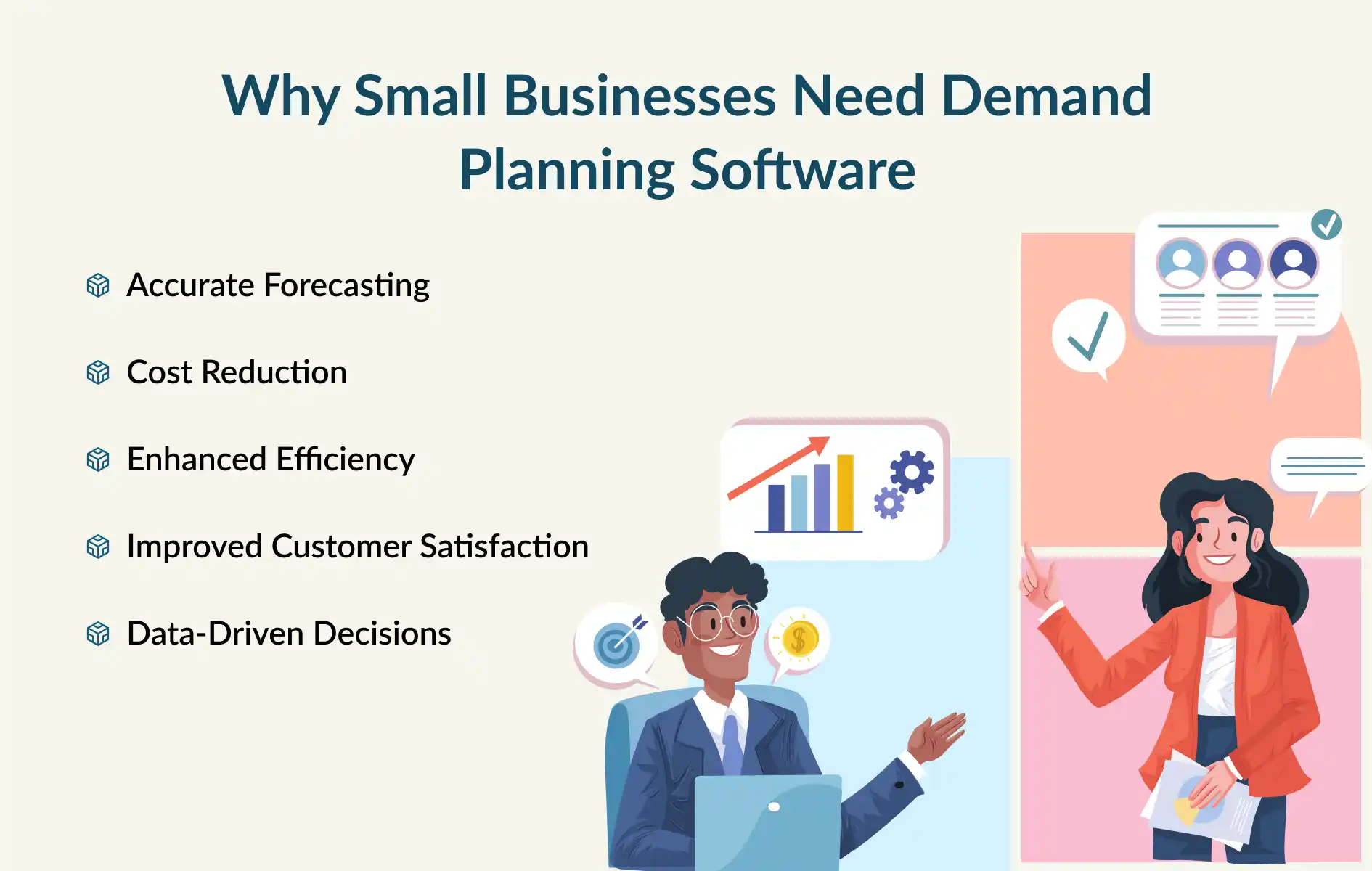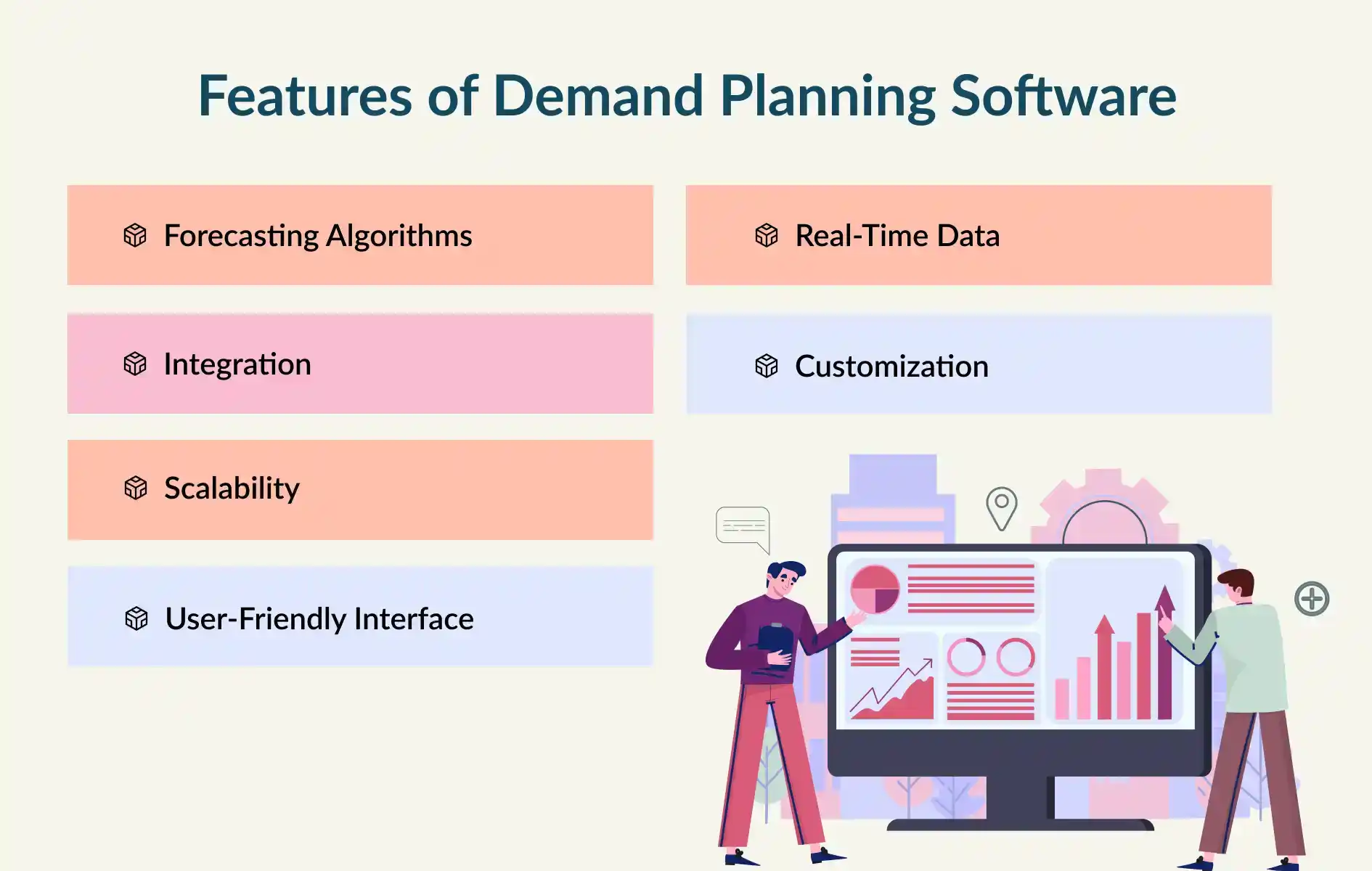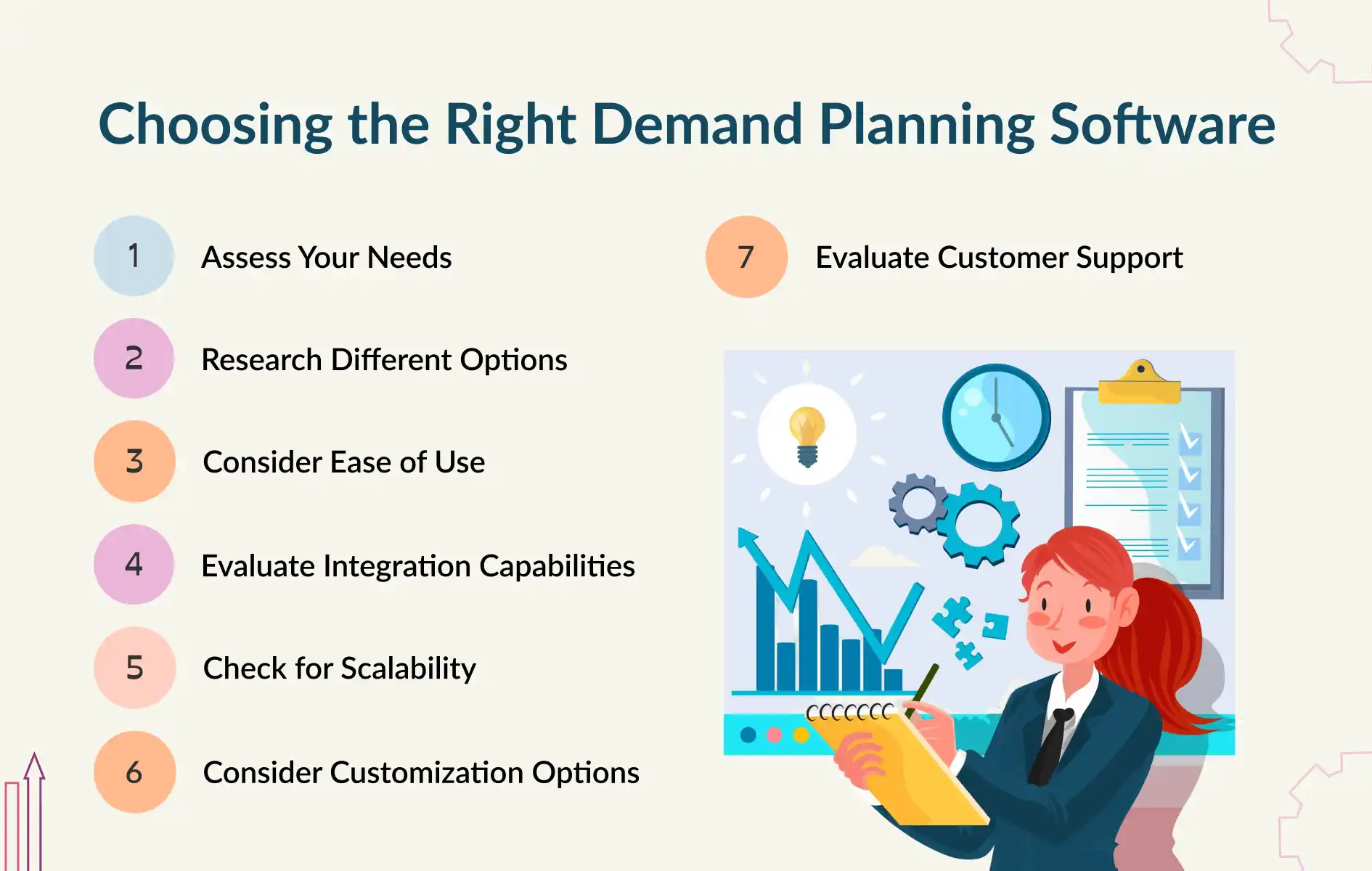Demand Planning Software for Small Business | thouSense

In today’s fast-paced market, small businesses must leverage every tool at their disposal to stay competitive. One such invaluable tool is demand planning software. This blog will delve into the importance of demand planning software for small businesses, its features, benefits, and how to choose the right one for your business.
What is Demand Planning Software?
Demand planning software is a specialized tool that helps businesses forecast future customer demand for products or services. It uses historical data, market analysis, and advanced algorithms to predict future sales and inventory needs. For small businesses, this means better inventory management, reduced costs, and improved customer satisfaction.
Why Small Businesses Need Demand Planning Software
Small businesses often operate with limited resources, making efficient inventory management crucial. Here’s why demand planning software is essential for small businesses:

● Accurate Forecasting: It helps in accurately predicting customer demand, which in turn reduces overstock and stockouts.
● Cost Reduction: By optimizing inventory levels, businesses can reduce storage costs and avoid excessive capital tied up in inventory.
● Enhanced Efficiency: Automating the demand planning process frees up time and resources, allowing businesses to focus on growth and customer service.
● Improved Customer Satisfaction: By ensuring the right products are available when customers want them, businesses can improve customer loyalty and satisfaction.
● Data-Driven Decisions: It provides valuable insights and analytics, helping businesses make informed decisions.
Key Features of Demand Planning Software
When selecting demand planning software for your small business, consider the following key features:

● Forecasting Algorithms: Look for software that uses advanced algorithms to predict demand accurately.
● Integration: The software should easily integrate with your existing systems such as ERP, CRM, and POS.
● Scalability: Choose software that can grow with your business, accommodating increased demand and complexity.
● User-Friendly Interface: The software should be easy to use, with intuitive dashboards and reporting tools.
● Real-Time Data: Access to real-time data ensures that your forecasts are based on the most current information.
● Customization: The ability to customize the software to meet your specific business needs is crucial.
Benefits of Demand Planning Software for Small Businesses
1. Optimized Inventory Management
Demand planning software helps small businesses maintain optimal inventory levels. By predicting future demand accurately, businesses can avoid the pitfalls of overstocking or understocking. This leads to lower storage costs, reduced waste, and improved cash flow.
2. Cost Savings
Effective demand planning can lead to significant cost savings. By reducing excess inventory and avoiding stockouts, businesses can minimize the costs associated with emergency orders, expedited shipping, and lost sales. Additionally, better inventory management reduces the need for markdowns and discounts to clear excess stock.
3. Enhanced Operational Efficiency
Automating the demand planning process streamlines operations, reducing the time and effort required for manual forecasting. This allows employees to focus on other critical tasks, improving overall productivity. Furthermore, the software’s integration capabilities ensure that data flows seamlessly across different systems, reducing errors and inefficiencies.
4. Improved Customer Satisfaction
Having the right products available at the right time is crucial for customer satisfaction. Demand planning software ensures that small businesses can meet customer demand consistently, leading to increased customer loyalty and repeat business. Satisfied customers are more likely to recommend your business to others, driving growth and profitability.
5. Data-Driven Decision Making
Demand planning software provides valuable insights into sales trends, customer behavior, and market conditions. This data-driven approach enables small businesses to make informed decisions, identify new opportunities, and respond quickly to changes in the market. By leveraging data, businesses can stay ahead of the competition and adapt to evolving customer needs.
How to Choose the Right Demand Planning Software for Your Small Business
Selecting the right demand planning software for your small business can be challenging. Some tips to help you make an informed decision are as follows:

1. Assess Your Needs
Start by evaluating your business needs and objectives. Take factors such as the business size, the supply chain complexity, and your budget into consideration. Identify the key features and functionalities that are essential for your business, such as advanced forecasting algorithms, integration capabilities, and real-time data access.
2. Research Different Options
Conduct thorough research on different demand planning software options available in the market. Read reviews, compare features, and request demos to get a better understanding of each software’s capabilities. Look for software that is specifically designed for small businesses, as it will likely be more affordable and tailored to your needs.
3. Consider Ease of Use
Select a user-friendly and easy-to-navigate software. A complex and difficult-to-use system can lead to frustration and decreased productivity. Look for software with intuitive interfaces, clear instructions, and comprehensive support resources. It’s also beneficial to involve your team in the decision-making process to ensure that the software meets their needs and preferences.
4. Evaluate Integration Capabilities
Ensure that the demand planning software can seamlessly integrate with your existing systems, such as your ERP, CRM, and POS systems. Integration capability is important for data accuracy and efficiency. A well-integrated system allows for real-time data updates, reducing the risk of errors and ensuring that your forecasts are based on the most current information.
5. Check for Scalability
As the business grows, demand planning needs to evolve. Choose software that can scale with your business, accommodating increased demand and complexity. Scalable software ensures that you won’t outgrow the system and need to switch to a new one in the future, saving you time and resources.
6. Consider Customization Options
Every business is unique, and your demand planning software should be customizable to meet your specific needs. Look for software that allows you to tailor features, reports, and dashboards to align with your business processes and goals. Customization options ensure that the software can adapt to your changing needs and provide the most value.
7. Evaluate Customer Support
Reliable customer support is essential when implementing new software. Choose a provider that offers comprehensive support services, including training, troubleshooting, and ongoing assistance. Responsive customer support can help you resolve issues quickly, ensuring that your demand planning processes run smoothly.
Top Demand Planning Software Options for Small Businesses
Here are some top demand planning software options that are well-suited for small businesses:
1. thouSense
thouSense is an AI/ML-based demand forecasting platform designed to deliver accurate forecasts and real-time KPI dashboards. It aims to minimize stockouts and enhance service levels by leveraging advanced algorithms. thouSense offers different plans tailored to meet various functionality needs, making it suitable for small businesses looking to optimize their inventory management and operational efficiency.
2. DELMIA Quintiq
DELMIA Quintiq offers advanced demand planning and optimization solutions that cater to small businesses. Its robust forecasting algorithms, user-friendly interface, and seamless integration capabilities make it a popular choice.
3. NetSuite Demand Planning
NetSuite Demand Planning provides comprehensive demand planning and inventory management features. Its real-time data access, scalability, and customization options make it an excellent choice for growing small businesses.
4. Microsoft Dynamics 365
Microsoft Dynamics 365 offers powerful demand planning tools integrated with its broader suite of business applications. Its advanced analytics, ease of use, and integration capabilities make it a top contender for small businesses.
5. SAP Integrated Business Planning (IBP)
SAP IBP provides end-to-end demand planning solutions with advanced analytics and real-time data access. Its scalability and customization options make it suitable for small businesses looking to optimize their demand planning processes.
Conclusion
Demand planning software is a vital tool for small businesses looking to stay competitive in today’s market. By accurately forecasting demand, optimizing inventory management, and improving operational efficiency, small businesses can achieve significant cost savings and enhance customer satisfaction.
When choosing demand planning software, consider factors such as ease of use, integration capabilities, scalability, and customer support. With the right software in place, your small business can thrive and grow, meeting customer demands effectively and efficiently.
Investing in demand planning software is a strategic decision that can yield substantial benefits for small businesses. By leveraging advanced forecasting tools and data-driven insights, small businesses can make informed decisions, streamline operations, and ultimately drive growth and profitability. If you haven’t already, now is the time to explore demand planning software and take your small business to the next level.
FAQs
1. What is demand planning software and why do small businesses need it?
Demand planning software predicts future customer demand using historical data and market analysis. Small businesses need it to optimize inventory management, reduce costs, improve efficiency, and enhance customer satisfaction by ensuring products are available when needed.
2. What key features should I look for in-demand planning software?
Look for advanced forecasting algorithms, integration with existing systems (ERP, CRM, POS), scalability, user-friendly interface, real-time data access, customization options, and collaboration tools to enhance overall demand planning processes.
3. How can demand planning software benefit my small business?
It helps in maintaining optimal inventory levels, reducing costs associated with overstock and stockouts, improving operational efficiency through automation, increasing customer satisfaction by ensuring product availability and enabling data-driven decision-making for better business outcomes.
4. What is the benefit of using specialized demand planning software?
Key benefits of demand planning software is it helps businesses predict demand more accurately, manage inventory better, and improve supply chain efficiency, saving money and getting customers satisfaction.
5. What are the key features to look for in demand planning software?
Demand planning software features is to look for AI-powered forecasting, real-time data tracking, planning tools, teamwork features, and easy connection with other business systems like ERP.
6. How important is data integration in demand planning tools?
It’s very important because it helps keep data updated, reduces mistakes, and gives a clear picture of sales, inventory, and demand trends.
7. How does demand planning software integrate with other business systems?
Demand planning software connects with systems like ERP, CRM, and inventory tools using built-in links or APIs, making data sharing easy and improving planning accuracy.